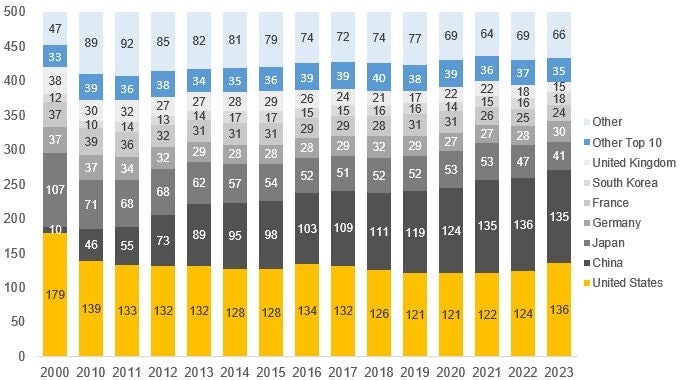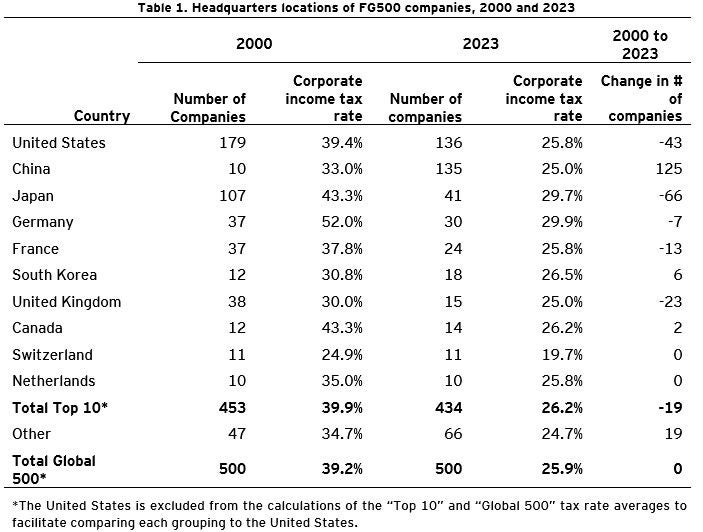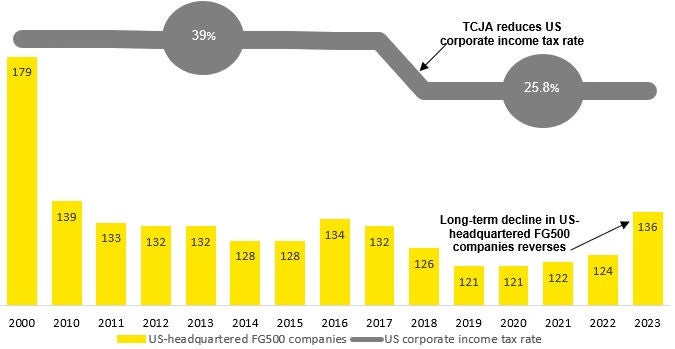EY refers to the global organization, and may refer to one or more, of the member firms of Ernst & Young Global Limited, each of which is a separate legal entity. Ernst & Young Global Limited, a UK company limited by guarantee, does not provide services to clients.
Link Area Header
-
Our QUEST team, can help your business provide data-driven results and insights for technical and nontechnical audiences. Learn more.
Read more
Changes over time
The United States' long-term downward trend in the number of FG500 company headquarters located in the country stabilized in 2019 and reversed beginning in 2021 (see Figure 1). Even with this recent reversal, however, the US has seen the number of companies headquartered there decline nearly 25% (from 179 to 136) between 2000 and 2023. In contrast, the number of FG500 companies headquartered in China increased more than ten-fold (from 10 to 135) over this same period. That growth, however, has appeared to level out with China's numbers holding relatively steady since 2021, and even dropping by one in 2023.
Looking at the numbers through a broader lens, the United States, China, Japan, Germany, France, and the United Kingdom have consistently ranked as the countries with the most FG500 company headquarters; that is, until 2023 when South Korea surpassed the United Kingdom. The UK has experienced its own reshuffling, with the number of FG500 company headquarters located there declining more than 60% (from 38 to 15) since 2000.
Collectively, the top 10 countries (by the number of FG500 company headquarters located in the country) hosted 434 (87%) of FG500 company headquarters in 2023, up from 411 (82%) in 2010, but down slightly from 451 (90%) in 2000. Many factors can affect a company's choice of headquarters location, such as a country's regional economic growth and stability, local infrastructure, regulatory environment, labor availability and productivity, transportation and other input costs, and tax policies.








